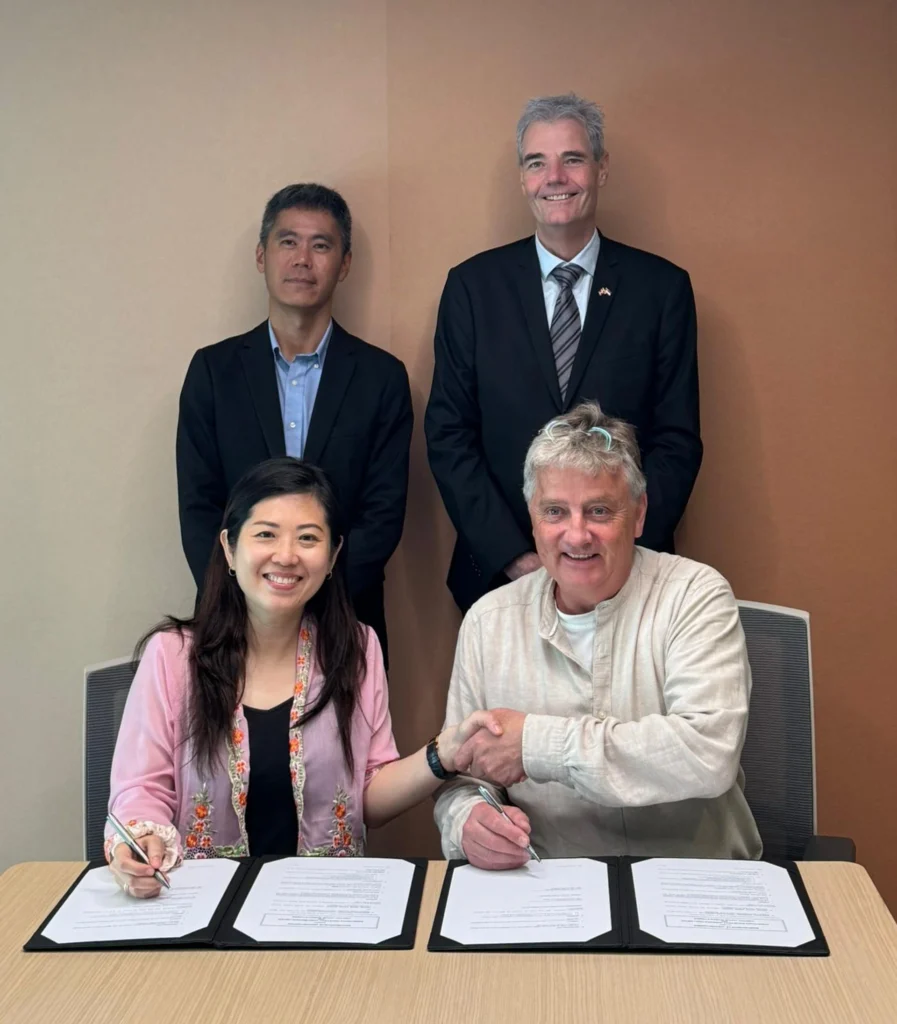SINGAPORE , May 8, 2025 – Armstrong Asia, the region’s leading flexible material solutions manufacturer and renowned Danish industrial designer Timothy Jacob Jensen have officially signed a Memorandum of Understanding (MOU) to establish a strategic collaboration, combining innovative precision engineering manufacturing with world-class design expertise.
The signing ceremony took place in Singapore, witnessed by esteemed representatives from the Singapore government agency, Enterprise Singapore and the Danish Ambassador to Singapore, underscoring the international significance and strong bilateral ties fostered by the partnership.
This landmark agreement brings together Armstrong Asia’s 50-year history of deep knowledge in advanced materials and technically advanced engineering solutions with Timothy Jacob Jensen’s legacy of Scandinavian design excellence. The collaboration aims to drive the development of future-forward products that fuse form, function, and sustainability.
“This MOU marks the beginning of an exciting journey where upstream brand design meet downstream technical component engineering, east meets west, and operational excellence meets craftsmanship,” said Ms. Phyllis Ong, Group CEO from Armstrong Asia. “We are thrilled to work with Timothy Jacob Jensen, whose design DNA aligns with our vision of creating purposeful and green customer solutions. With 16 factories across Southeast Asia and China serving hundreds of international customers across diverse markets in the premium consumer electronics, automotive, industrial, medical and healthcare industries, we are delighted to partner Timothy Jacob Jensen to promote their design capabilities.”
Timothy Jacob Jensen, whose design heritage spans generations and includes collaborations with global brands, shared his enthusiasm: “Partnering with Armstrong Asia allows us to explore new design frontiers by integrating advanced manufacturing and sustainable material science into timeless design principles.”
This MOU sets the foundation for a long-term collaboration that is expected to result in new and greener design innovations and more regional economic growth driven by creativity and sustainability.
About Armstrong Industrial Corporation
Armstrong Industrial Corporation is Asia’s leading manufacturer of flexible material solutions with 16 factories across Malaysia, Thailand, Indonesia, Vietnam, the Philippines and China. Founded and headquartered in Singapore since 1974, Armstrong combines superior engineering solutioning with a proprietary database of over 6000 materials and 13 precision engineering process technologies. Its strong commitment to quality and innovation has made it a leader in Noise, Vibration, Heat & Safety Management Solutions. With its strategic presence, a global network, and one-stop integrated capabilities, Armstrong delivers innovation and quality across diverse industries like automotive, consumer electronics, medical, hard disk drive and industrial manufacturing.


